Even with influential guides navigating foodies to elite restaurants around the planet, great eateries continue to fly beneath the radar. So how do we find these unsung heroes?
Restaurant-industry insiders seem a good place to start.
So we asked some experts: food writers and a regional chairs of the global academy that appoints panelists for the World’s 50 Best Restaurants.
Here are their recommendations for underrated restaurants, none of which (at the time of writing) features on global culinary lists that matter.
Al Toke Pez, Peru (Lima)
Lima-based food critic Diego Salazar says: “Tomás ‘Toshi’ Matsufuji, son of late Nikkei chef Dario Matsufuji, has a PhD in supramolecular chemistry but now cooks in his hole-in-the-wall eatery Al Toke Pez, where one can have a meal for about $10, excluding drinks.
“Set in the lower-middle class neighborhood of Surquillo, this eight-seat cevicheria serves a menu of six types of offbeat fish and seafood, plus a secret stash of items available only to friends and regulars.
“Matsufuji’s most famous dish is cachete frito, prepared with the fin of robalo (snook) or mero (grouper), deep-fried and served in a seafood sauce.”
Al Toke Pez, Av. Angamos Este 886, Surquillo 15047, Peru
Atoboy, USA (New York)
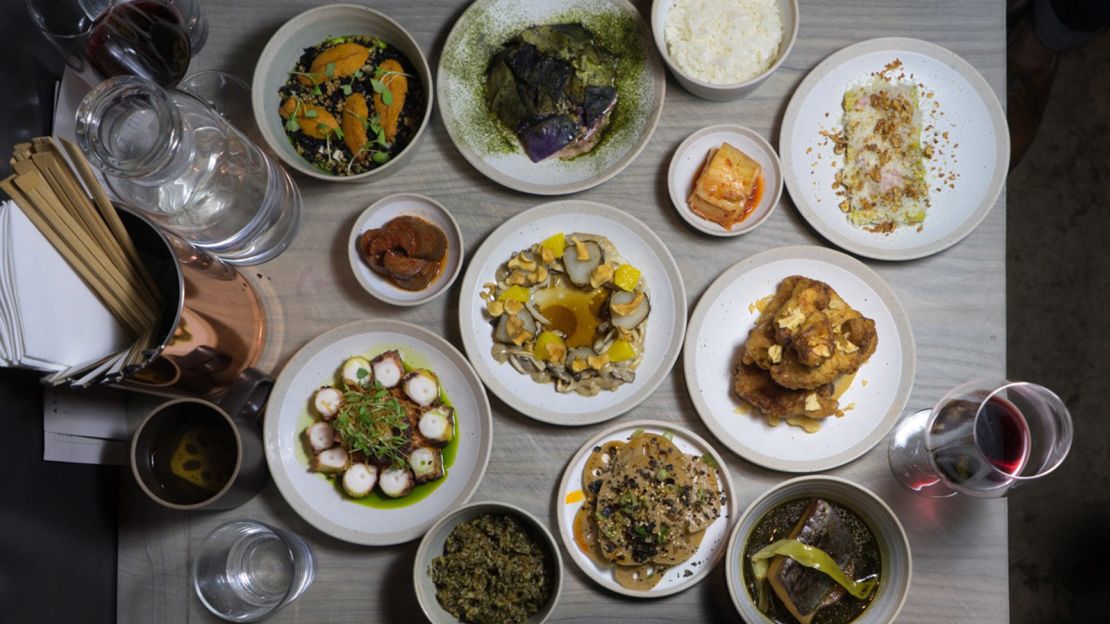
Mitchell Davis, exec VP of the James Beard foundation, says: “For a unique experience in New York where the food is sophisticated, the design casual but urbane, the service lovely and the price right, consider Atoboy by Junghyun Park.
“The food by the former chef de cuisine of two Michelin-starred Jungsik (NYC) is strongly Korean-inflected but with modern elements, top ingredients and beautiful presentation, each underscored by umami and art.
“It’s also reasonably priced – $36 for three different dishes. Favorites are the fried chicken with spicy peanut sauce and garlic, corn with taleggio cheese, bacon and doenjang, and mackerel with green chilli, radish and scallion.”
Atoboy, 43 E 28th Street, New York, NY 10016, USA; +1 646 476 7217
MORE: The best things to do in New York City beyond Manhattan
Bread & Wines Vineyard Restaurant, South Africa (Cape Town)
Food writer Tamsin Snyman says: “Eighteen years of masterful cuisine has been carved here into the fabric of Franschhoek’s culinary scene, courtesy of Neil Jewell, who cut his teeth in the kitchens of Stephen Bull, Richard Corrigan and Ray Neve before he began his journey at Bread & Wine.
“His wife Tina, a master-baker, runs the front-of-house, while Jewell, also known as the charcuterie king of the country, toils in the kitchen. Locals return time and again for his bespoke charcuterie platters, his champion dish of butter-roasted kingklip with chicken-wing confit and pickled mushrooms.
“The seasonally updated menu also includes treats such as warm salad of bone marrow, oxtail and sweetbreads.”
Bread & Wines Vineyard Restaurant, Moreson Farm, Happy Valley Road, Franschhoek, 7690, South Africa; +27 21 876 4004
Bunker, Thailand (Bangkok)
Bangkok 101 publisher Mason Florence says: “In just a year since opening, Bunker has set the gold standard in the buzzing dining scene that’s recently sprung up along Sathorn Road.
“It’s one of the city’s true chef-driven, casual fine-dining eateries, and the food that chef Arnie Marcella cranks out is straightforward and scrumptious New American with a serious emphasis on local organic produce.
“Marcella is almost obsessive when it comes to sourcing quality ingredients, and he adapts his dishes to what’s fresh and available in the market.
“I adore the grilled beef tongue and snails, cleverly presented with parsnip puree, pickled mushrooms and parsley froth. The bar does superlative cocktails too!”
Bunker, Sathon Nuea Rd, Sathorn, Khet Bang Rak, Krung Thep Maha Nakhon 10500, Thailand; +66 92 563 9991
Burgundy, Lebanon (Beirut)
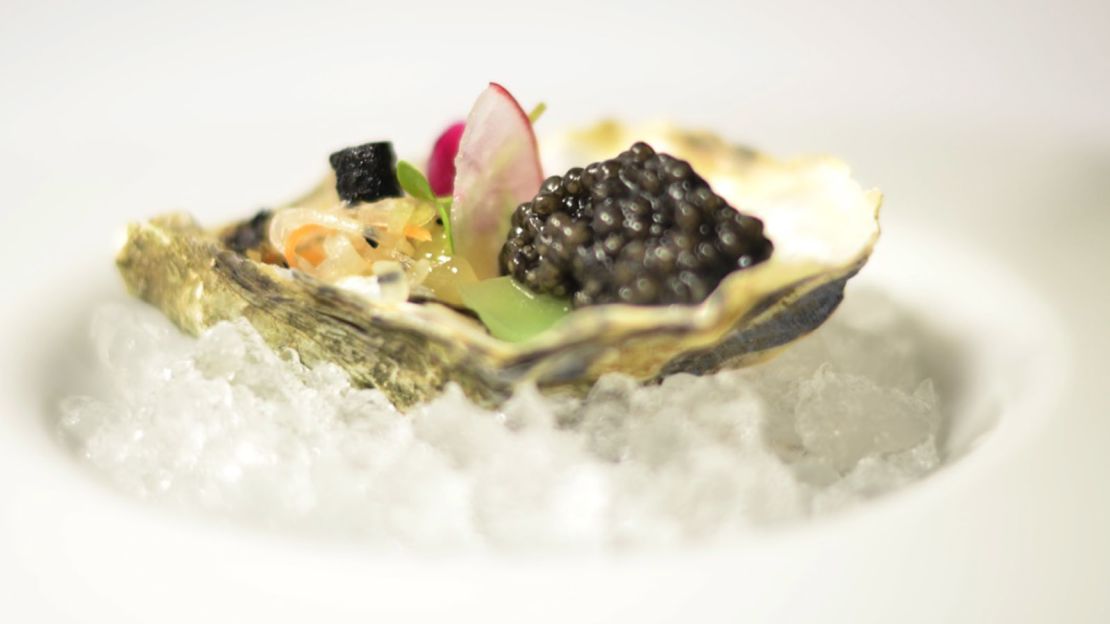
Jade George, editorial director of Middle Eastern food culture magazine Carton, says: “It bills itself as contemporary French but chef Youssef Akiki of Burgundy challenges rigid dining habits by introducing Lebanese dishes done his way, and often experimenting with local produce.
“Although the restaurant’s tasting menu changes seasonally, I am fond of Akiki’s bird dishes, his pickled vegetable dish from Jacqueline’s garden and the savory and sweet bites with which he takes you on a regional journey.
“The Middle East is a tricky region when it comes to ‘fine dining’; it’s split into countries with hardly any produce to speak of, and others in economic turmoil. To stand out in that category of restaurants and keep challenging what exists is worthy of a mention.”
Burgundy, 752 Gouraud Street, Saifi Village, Beirut, Lebanon
Crizia, Argentina (Buenos Aires)
Food journalist Raquel Rosemberg says: “Although Argentina is famous for its meats, it has an extensive coast with incredible seafood and Crizia by chef proprietor Gabriel Oggero is the place to savor local oysters, fresh fish and other seafood.
“Oggero is obsessed with the fruits of the sea and his cuisine has strong Mediterranean accents. I highly recommend dishes like the sole tartare, burrata with aubergine puree and spiced pistachios, wood fire-grilled octopus and Ecuador red tuna with papines (northern potatoes) and vegetables, washed down with boutique Argentinian wines.”
Crizia, Calle Gorriti 5143, 1414 CABA, Argentina; +54 11 4831 4979
Döllerer, Austria (Salzburg)
Christian Grünwald, editor of Austrian magazine, A La Carte, says: “Andreas Döllerer, chef-owner of Döllerer, has made alpine cuisine his trademark and this has put his restaurant on the map as one of Austria’s best.
“He works almost exclusively with ingredients from suppliers in the Salzburg Alps, including vegetables from the gardens of the Tennengau region and fish from the nearby Bluntau Valley.
“For a teaser of what you might experience here, think fennel baked in a dough made from finely ground glacial polish from the ancient rock of Austria’s highest mountain, the Grossglockner, topped with fish eggs from Austria’s first caviar producer, Walter Grüll.”
Döllerer, Markt 56, 5440 Golling an der Salzach, Austria; +43 6244 4220
Enigma, Spain (Barcelona)
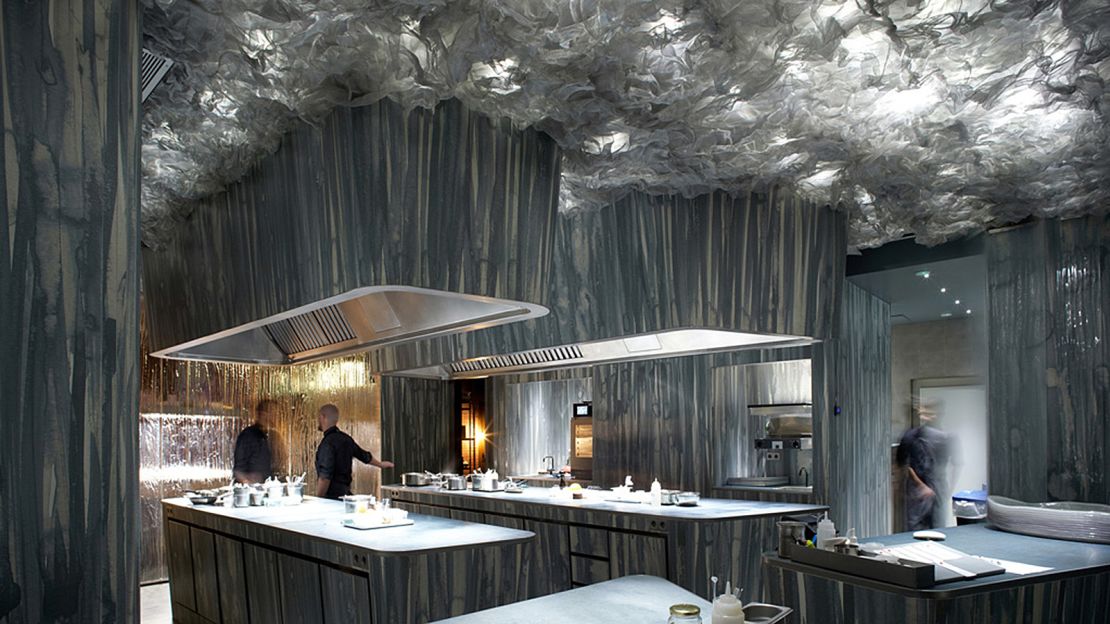
Journalist Cristina Jolonch says: “Albert Adria envisions his four-month-old Enigma as a medium to long-term project with its full potential unfolding over time, so you will not find the fêted chef categorizing the style of its cuisine.
“It’s probably too new to make any lists, but this restaurant offers a fascinating gastronomic proposal that plays with a gamut of spaces, each focusing on different styles of cooking (be it a snack, an ingredient, straightforward flavors or cocktails), creating a journey that invites diners to live through different experiences.
“My favorite dishes are sea ox with its coral in a soy kimchi broth and trumpet mushroom bread with Périgueux sauce.”
Enigma, Sepúlveda Street, 38-40 Barcelona, Spain
Igni, Australia (Geelong, Australia)
Pat Nourse, managing editor of Australian Gourmet Traveller magazine, says: “Igni does everything that fancy restaurants do, only lighter, faster and more fun. Set on the back blocks of Geelong, two blocks from a strip club, it’s not exactly your everyday country restaurant, but chef Aaron Turner has the gift of balancing economy of gesture with impact on the plate and palate.
“The service is exactly the right mix of casual and detail-oriented, and the wine list is stunning. Picks of the menu include the crisp chicken skin with whipped cod roe (great with a glass of Sicus Cru Mari) and the dry-aged Great Ocean duck paired with finger lime, crunchy coastal succulents and grilled fennel.”
Igni, Ryan Pl, Geelong, Victoria 3220; +61 3 5222 2266
Jiquitaia, Brazil (Sao Paulo)
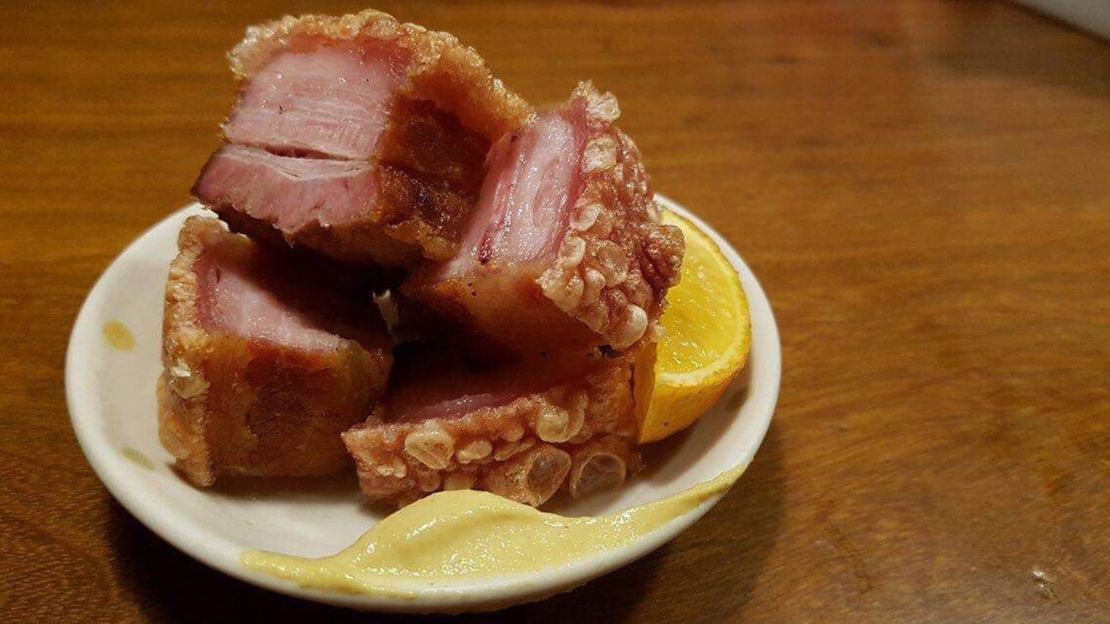
Journalist and culinary critic Josimar Melo says: “Despite the simplicity of its venue, the elaborateness of the Brazilian fare at Jiquitaia has brought much attention to this discreet restaurant set in a small house in Sao Paulo.
“A former lawyer, chef Marcelo Corrêa Bastos, works the stove while his sister takes charge of the cocktails, headlined by the spectacular caipirinhas, Brazil’s national cocktail.
“Expect good old Brazilian cuisine at affordable prices and delicately flavored dishes like pork-belly crackling, duck rice with tucupi (Amazon cassava jus), seafood moqueca (a fish stew from Bahia with coconut milk) and coconut cake.”
Jiquitaia, R. Antônio Carlos, 268 - Consolação, São Paulo - SP, 01309-010, Brazil; +55 11 3262 2366
Lula Café, USA (Chicago)
Food reporter Steve Dolinsky says: “At Lula Café, which serves upscale Midwestern fare with a New American sensibility, executive chef and owner Jason Hammel (along with his chef de cuisine Sarah Rinkavage) understand the seasons better than most kitchens.
“There are loads of local vegetables on the menu, with meats as an accent, while sustainably raised seafood shows up more often than not.
“Monday lunch might feature the Midwestern pozole with a farm egg and pickled vegetables, or just some seasonal pastries. If you go for dinner, try the six-course vegetarian tasting menu (only $50) or the three-course Monday farm dinner.”
Lula Café, 2537 N Kedzie Ave, Chicago, Il 60647, USA; +1 773 489 9554
Moregrill, Russia (Moscow)
Andrey Zakharin, editor-in-chief of Gastronom PH, says: “At new Moscow restaurant Moregrill, young chef Mark Statsenko is pulling out all the stops to elevate the dining experience.
“The food, headlined by ‘raw’ and ‘grilled’ fare like sashimi, ceviche and tartare as well as Josper oven-grilled seafood and meats, is fresh and tasty and the restaurant’s interior cool.
“Red algae, for instance, is served with sweet and sour kimchi pineapple; wild sea bass is joined with aromatic turmeric and jalapenos; and barbecued flank steak with remoulade cherry sauce.
“You’ll also enjoy a discovery of Russian seafood like scallops from Murmansk and Sakhalin as well as shrimps from Magadan.”
Moregrill, Kuznetsky Most 18/7, Moscow; +7 499 963 8272
READ: Pintxos paradise: The Spanish town defined by fine dining
Neighborhood, Hong Kong
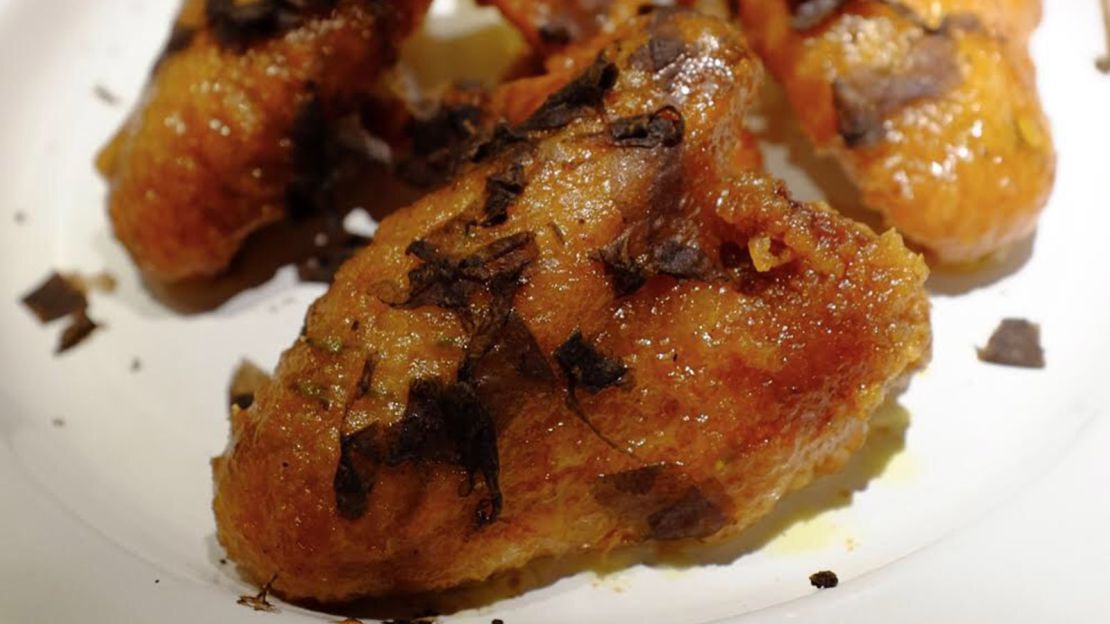
South China Morning Post food critic Susan Jung says: “Neighborhood, by chef-owner David Lai, is a casual French restaurant located down a dark alley off Hollywood Road.
“A UC Berkeley graduate and an alum of Alain Ducasse’s Le Louis XV, David goes to the fish markets daily to seek out wild seafood harvested from Hong Kong waters.
“His menu is brief – about 20 savory items, plus a few specials that need to be pre-ordered.
“At a recent meal, we had fragrant black truffle chicken wings, a seafood platter with goose barnacles, razor clams and tiny whelks, and a fricassée of chicken livers, cockscombs and rooster testicles with morel mushrooms. He also makes the best canelés in Hong Kong.”
Neighborhood, Man Hing Ln, Central, Hong Kong; +852 2617 0891
PELIKAN, China (Shanghai)
Food writer Crystyl Mo says: “Set in an atmospheric heritage building, PELIKAN brings ‘relaxed Nordic dining’ to Shanghai under talented young Danish chef Kasper Elmholdt Pedersen, who cut his teeth at Michelin-starred Henne Kirkeby Kro and Geist in Copenhagen.
“The moody, spot-lit tropical interior with quirky wallpaper is a brilliant contrast to the cool Northern European menu that features Nordic-inspired small plates.
“Think green and white asparagus with poached shrimp and radishes, juicy pork and mushrooms, and sweet Danish beer bread paired with raspberries, and crystalized white chocolate. A favorite is Pedersen’s simple yet stunning charred beets three ways (charred, raw and pureed) with beurre blanc.”
PELIKAN, 225 Xikang Lu (near Beijing Lu) Shanghai, China; +86 21 6266 7909
Råkultur, Sweden (Stockholm)
Publisher Lars Peder Hedberg says: “You might have heard about Esperanto, chef Sayan Isaksson’s highly praised fine dining restaurant that bridges the best of Nordic and Japanese inspirations.
“But its more casual sibling Råkultur, meaning ‘raw culture,’ is where Isaksson is perhaps at his most radically innovative, redefining what sushi and sashimi can be all about.
“The magnificent Nordic sashimi plate, with seafood you’ve never heard of, much less likely tasted, is perhaps the most traditional – at least when compared to his pike-perch nigiri topped with lardo and confit pork, his maki with burnt salmon skin with roasted garlic or right-out renegade creations like short-rib gunkan with smoked soy or his teriyaki of grilled duck hearts in pepper.”
Råkultur, Kungstensgatan 2, Stockholm, Sweden; +46 8 6962325
Ristorante Giglio, Italy (Tuscany)
Repubblica Sapori editor Eleonora Cozzella says: “Too many cooks spoil the broth, but at Restaurant Giglio the opposite is proving true.
“With a trio of head chefs – Lorenzo Stefanini, Stefano Terigi and Benedetto Rullo, each no older than 30 – pitching their ideas, this historic temple of Tuscan tradition in the center of Lucca has evolved into an innovative gastronomic sum greater than its parts.
“For proof, look no further than the boundary-pushing dish of spaghetti cooked in Syrah wine with grated frozen pigeon liver pate, a perfect counterpoint to the classical setting in which it’s served.”
Ristorante Giglio, Piazza del Giglio 2, 55100 Lucca, Italy; +39 0583 494058
MORE: How to save money and avoid crowds while traveling
Terakoya, Japan (Tokyo)
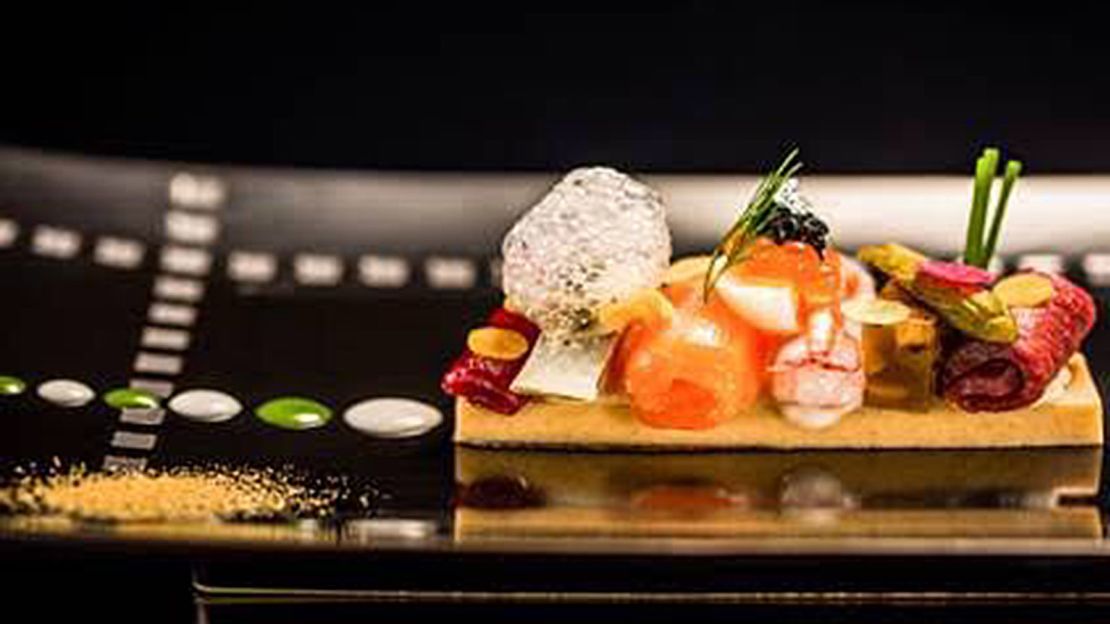
Japanese columnist Takanori Nakamura says: “Terakoya is not a new restaurant. It was founded more than 60 years ago by the grandfather of current chef-owner Mitsuo Hazama, but remains off the beaten track.
“Apart from an official Krug Champagne room and a wine cellar, the vast property also has a Japanese garden, a Japanese tea ceremony room, a theater pavilion and a smokehouse that smokes all the salmon sold on premise.
“The restaurant is known for its smoked salmon dishes and the chef, who is a keen researcher, has a catalog of more than 3,000 original recipes he created.”
Terakoya, 3-33-32 Maehara-cho, Koganei-shi, Tokyo, Japan; +81 42 381 1101
Virtus, France (Paris)
Writer Nicolas Chatenier says: “Chef-owners Chiho Kanzaki, Japanese, and Marcelo di Giacomo, Italian, are former chefs from Mirazur and at their minimally embellished restaurant housed in simple premises in eastern Paris, they serve highly refined French contemporary cuisine with hints of Japanese (try the signature dish of asparagus tempura).
“Here, the flavors are precise and each dish is carefully put together. The superlative fare and amazing wine selection from sommelier Paz Levinson makes this one of my greatest discoveries in recent months.”
Virtus, 8 Rue Crozatier, 75012 Paris, France; +33 9 80 68 08 08
WeinAmRhein, Germany (Cologne)
Journalist Christoph Teuner says: “WeinAmRhein is a total little work of art, a wonderful overall experience. The wine list is impressive; sommelier Melanie Panitzke has 900 different wines in her cellar, 30% of them from Germany, many very rare ones.
“Food is great, prepared by chef Sebastian Mattis, who worked as a sous-chef in the two-star French restaurant Le Moissonnier. Panitzke and Mattis develop every dish together, from the first to the last and thus create perfect pairings like ray, lovage, endives and a 2007 Gewürztraminer Auslese Albersweiler Latt by Hansjörg Rebholz. Great interior. No stereotype of a German Weinstube, but un-kitschy, modern, cool.”
WeinAmRhein, Johannisstraße 64, 50668 Köln, Germany; +49 221 9124 8885
Wilsons, UK (Bristol)
Food writer Xanthe Clay says: “Wilson’s is a slip of a restaurant in a back street of a Bristol suburb favored by students and young professionals.
“Formerly of Gordon Ramsay Royal Hospital Road, The Square and The Hand and Flowers, Jan Ostle’s elegant cooking shrugs off fashionable twerks and focuses on a weekly changing menu of just three starters, three main courses and two puddings plus cheese, although you’ll be treated to a mouthful of something delicious at the start – radishes from the chef’s garden with whipped jamon iberico fat, say.
“Choose a glass from the short list of carefully chosen, mostly biodynamic wines with dishes such as cod, parsley, snails, bone marrow and Cevenne onions.”
Wilsons, 24 Chandos Rd, Bristol BS6 6PF, UK; +44 117 973 4157
READ: 96 of the world’s best chefs share their favorite food experiences
Evelyn Chen is a food and travel writer. In between dinners and writing assignments, the former Zagat editor blogs about food at bibikgourmand.





















